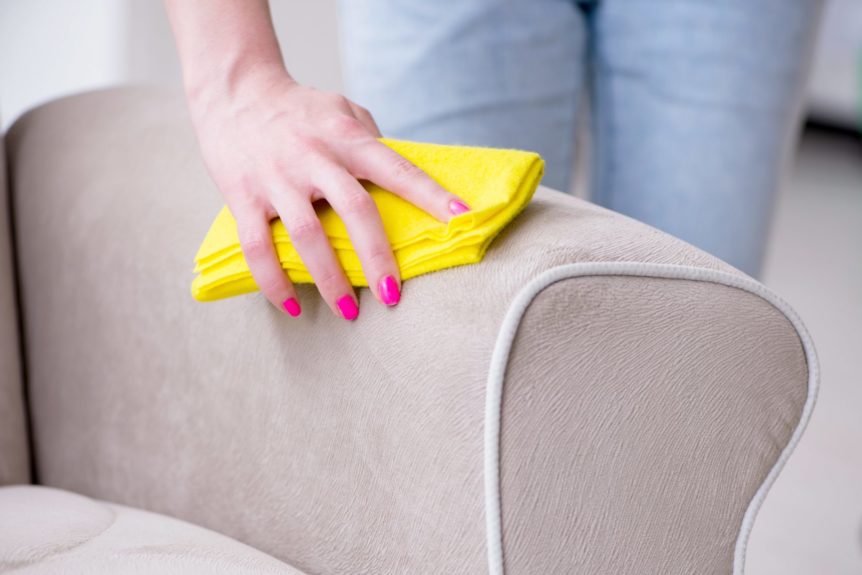
How to Properly Test Fabric & Furniture Cleaner
If you ever find yourself researching how to clean fabric or furniture, or if you’re reading the directions on a new cleaning product, there’s usually an admonition to first test the cleaner to make sure it doesn’t discolor or damage the material. Sounds simple enough, but how do you properly test the cleaner without the running the risk of damaging your carpet, rug, or upholstery during the test run?
First, know what you’re testing for. Whenever you’re testing a cleaner on fabric, you’re looking for a few key things:
- Colorfastness (maintaining the fabric’s color without it fading or running) for each color that’s in need of cleaning
- Potential degradation of the fiber from some detergents
- If it changes the feel of the fabric
Look for an inconspicuous area
If your chair or couch cushion is removable, this part is easy. Simply lift out the cushion and turn it to the zippered side or the part that pushes against the back or arms; in other words, the part that’s always hidden. Wet a rag (preferably white or cream in color) in cool to lukewarm water and apply some of your chosen cleaner, pressing the cloth against the cushion for about 5 minutes, or letting it sit for about 10-20 minutes. Remove the wet cloth and dry the area with a hair dryer on a low setting.
Check the rag for any color that may have transferred
And check if the color on the actual cushion is altered. Next, feel the fabric on the area you tested compared to an area you didn’t. If there’s any color bleeding or if the fabric feels different, this is an issue and the cleaner shouldn’t be used. Repeat the process with other cleaners until you find one that doesn’t bleed or alter the feel. If any area of the fabric was damaged during testing, no harm was really done because it will go unnoticed once the cushion is put back in place.
But let’s say you have an accent chair that needs a stain removed, but there’s no removable cushion or hidden area to test a cleaner on. Then what? If the chair’s inner, lower back meets the seat cushion (aka: the area you might search in for loose change), you’re in luck! Apply some of the detergent on a cleaning cloth and tuck it inside this area, leaving it there for 15-20 minutes. After this test, check the cloth for any color transference. If there’s any color bleeding or altered texture or look of the fabric, don’t proceed with that detergent. If you’d like to try another cleaner, go ahead and do so, but it may be a good idea to call a professional to have them look if you find the problem occurs again.
One final tip:
Never use a scouring brush, scrubbing brush, or needle point bristles on upholstery. Abrasive scrubbing and scouring may remove the spot, but they’ll damage the fabric, sometimes beyond repair. Use a tarry towel, cleaning cloth, or natural sponge. Try not to use things like baby wipes or cleaning wipes, as these often have additional chemicals that may interact with the cleaner, resulting in an inaccurate test result.




